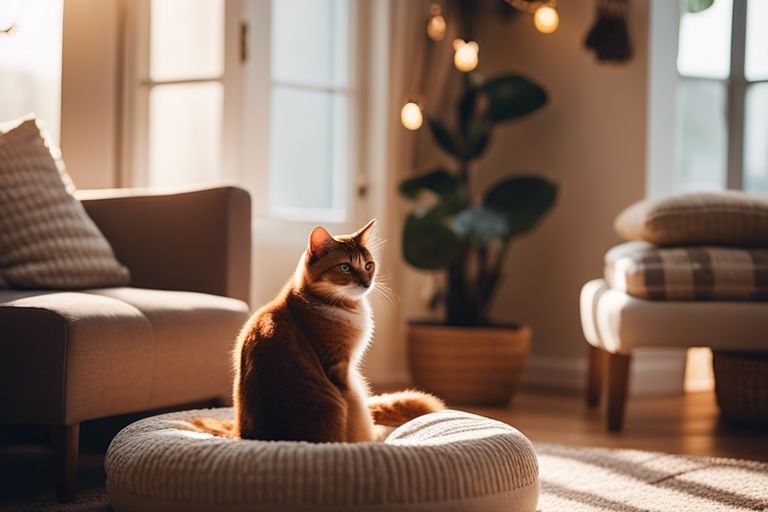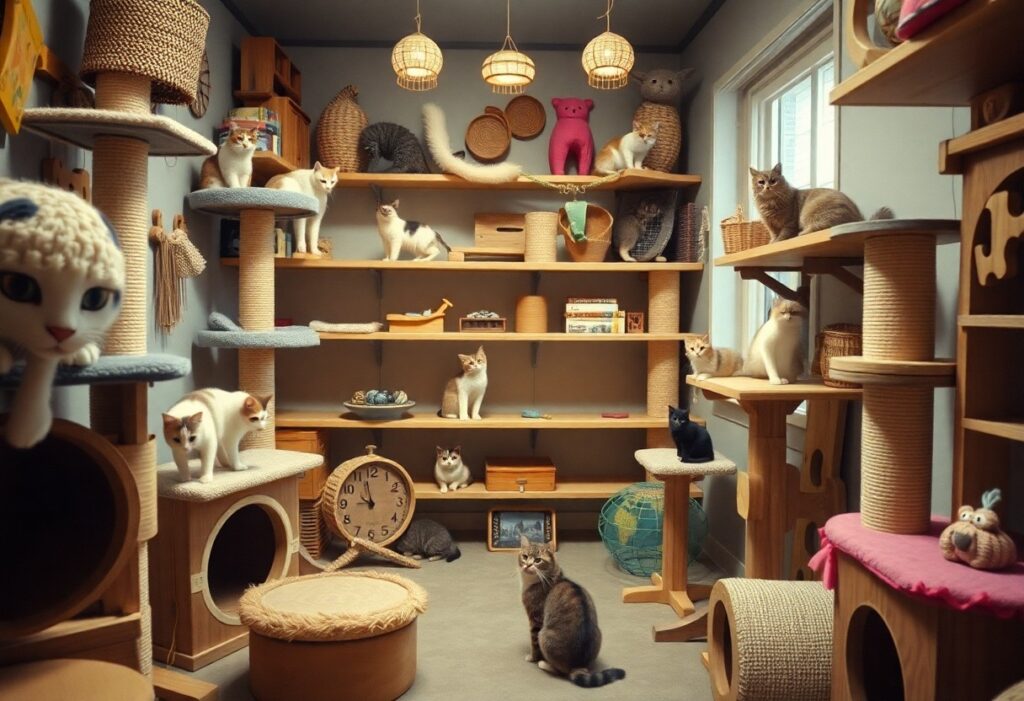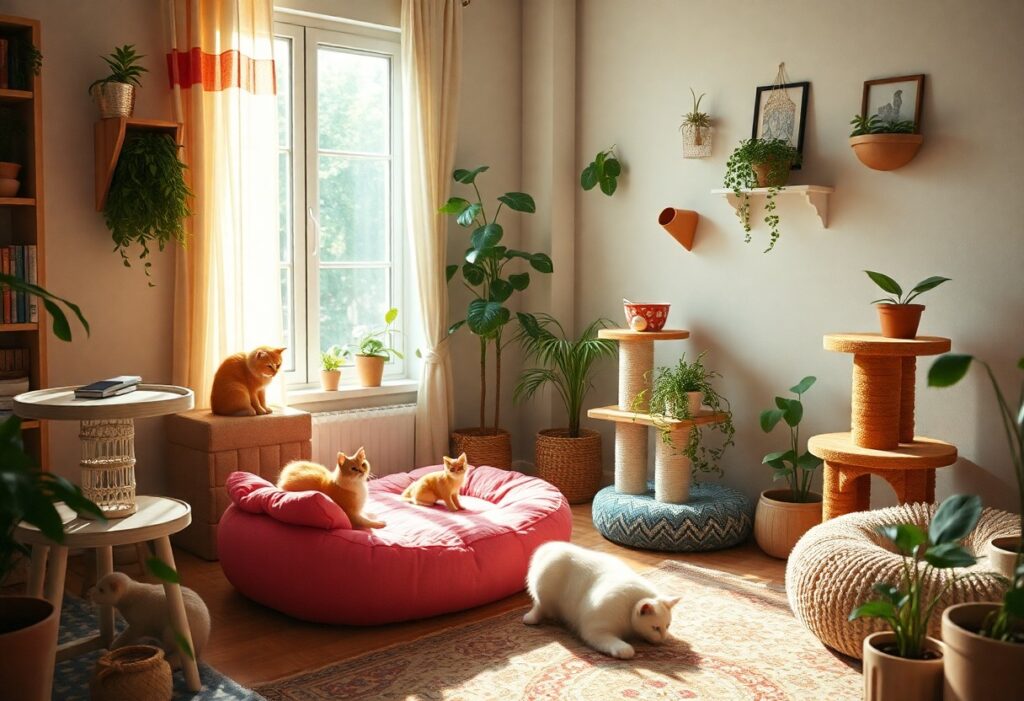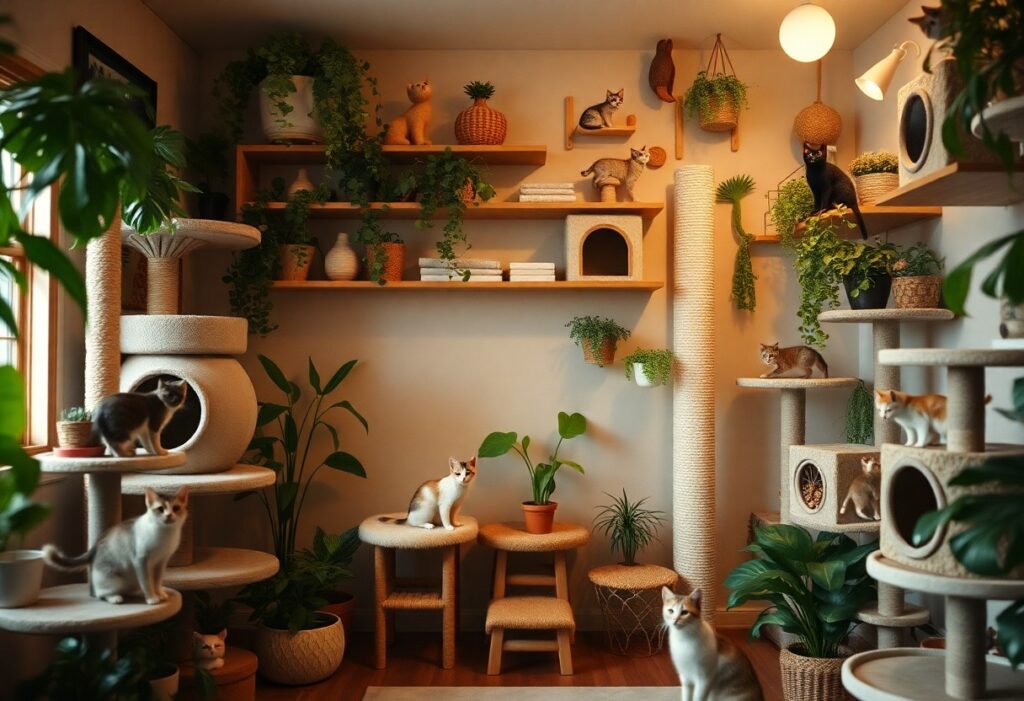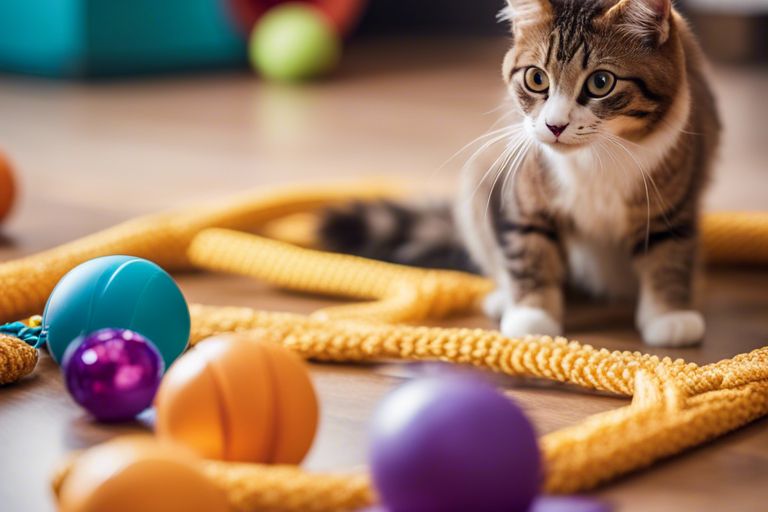Obtaining a felinophile’s abode may require more than a penchant for pampering, but rather an understanding of what it takes to create a cat-friendly home environment. Cats, known for their independent and territorial nature, thrive in spaces that are designed with their unique needs in mind. In this tutorial, we will explore the essential elements of a cat-friendly home, from the layout and design of the space to the incorporation of enriching features that cater to our feline companions.
From providing ample vertical space for climbing and perching to incorporating cozy hiding spots and interactive play areas, there are numerous ways in which cat owners can transform their homes into a haven for their beloved pets. This tutorial will cover practical tips, product recommendations, and DIY ideas to help you create a welcoming and stimulating environment for your feline friends, ensuring that your home is both a sanctuary for your cat and a stylish, comfortable space for you.
Key Takeaways:
- Designate Cat-friendly Areas: Create spaces in your home that cater to your cat’s needs, such as cozy nooks for napping and vertical perches for climbing.
- Choose Cat-friendly Furniture: Opt for pet-friendly furniture with durable and easy-to-clean fabrics that can withstand scratching and shedding.
- Provide Enrichment Activities: Keep your cat entertained and mentally stimulated with toys, scratching posts, and interactive activities to prevent boredom and anxiety.
- Offer Safe Access to the Outdoors: Consider providing a secure outdoor enclosure or a window perch to allow your cat to enjoy the sights and sounds of nature without the risks of roaming free.
- Keep a Clean and Healthy Environment: Regularly maintain your cat’s litter boxes, provide fresh water, and ensure a clean and hazard-free living space to promote your cat’s well-being.
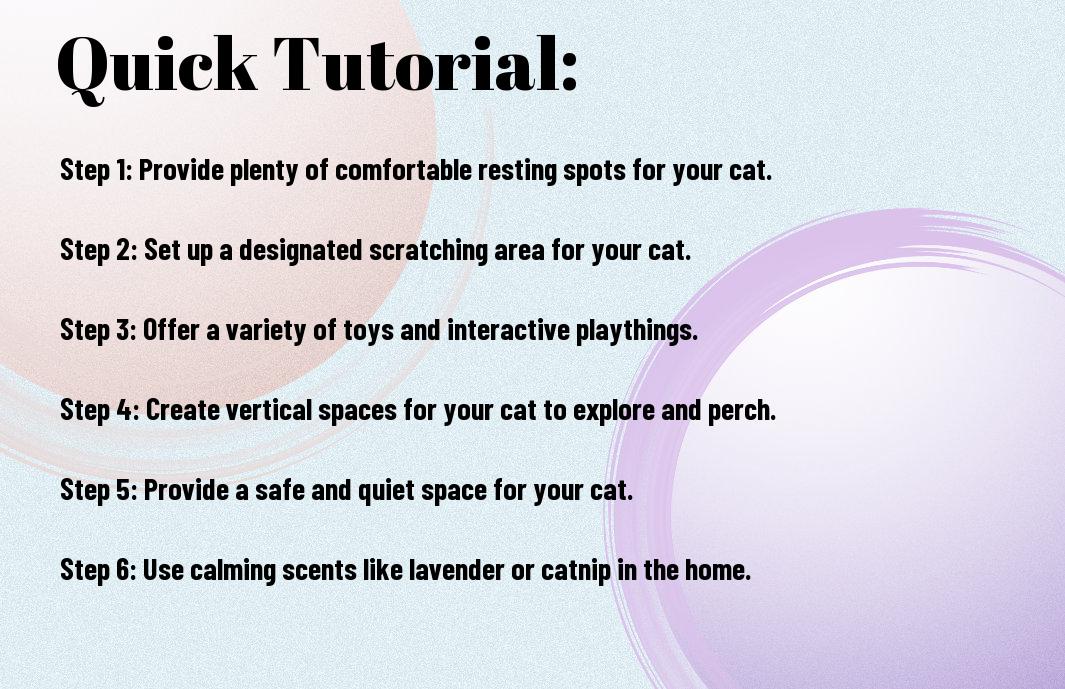
Understanding Your Cat’s Needs and Preferences
Even though your feline friend may sometimes seem aloof, it’s important to recognize that they have specific needs and preferences that should be taken into consideration when creating a cat-friendly home environment. Understanding these can help you better meet your cat’s needs and ensure they feel comfortable and content in your home.
Basic Feline Psychology
The first step in creating a cat-friendly home is understanding the basic psychology of your feline companion. Cats are territorial animals and thrive in environments where they feel in control and safe. They also have natural hunting instincts and enjoy activities that engage these instincts, such as climbing, scratching, and pouncing. Providing them with spaces and tools that allow them to exhibit these natural behaviors is essential for their overall well-being and contentment in your home.
Physical and Mental Stimulation Requirements
For your cat to be happy and healthy, it’s important to provide them with both physical and mental stimulation. This can come in the form of interactive toys, scratching posts, and vertical spaces for climbing and perching. Mental stimulation can be provided through puzzle feeders, training exercises, and interactive play. Meeting these requirements can help prevent boredom, anxiety, and destructive behavior in your cat.
Preferences such as climbing, hiding, and exploring should be considered when choosing furniture and creating spaces for your cat within your home. Providing ample opportunities for these activities can significantly contribute to your cat’s overall satisfaction and well-being.
Designing Your Space with Your Cat in Mind
After deciding to create a cat-friendly home environment, the next step is to consider how to design your space with your feline friend in mind. Cats have specific needs and preferences when it comes to their living space, and by understanding and accommodating these, you can ensure that your home is a comfortable and inviting place for both you and your cat.
Furniture and Layout Considerations
Space and layout are crucial factors to consider when designing a cat-friendly home. Cats love to climb, perch, and explore, so providing them with a variety of furniture options such as cat trees, shelves, and scratching posts can help fulfill their natural instincts. When arranging furniture, consider creating vertical spaces for your cat to explore and relax, as well as cozy nooks for them to retreat to when they need some alone time. Additionally, it’s important to consider the placement of litter boxes and feeding stations to ensure they are easily accessible for your cat while also being discrete and out of the way.
Safe Spaces and Hideaways
With cats being territorial animals, it’s essential to provide them with safe spaces and hideaways where they can feel secure and in control of their environment. Cats often seek out quiet and secluded areas to take a break, so providing them with cozy spots such as cat beds, blankets, or enclosed spaces can help fulfill this need. Additionally, consider creating elevated perches or window seats where your cat can observe their surroundings from a safe and comfortable vantage point.
Designing safe spaces and hideaways for your cat is crucial for their well-being and can help reduce stress and anxiety. By incorporating these elements into your home design, you can create a cozy haven that meets your cat’s needs while also blending seamlessly with your overall aesthetic.
The Essentials of a Cat-Friendly Home
Keep your feline friend happy and comfortable by incorporating the essentials of a cat-friendly home into your living space. From designated feeding stations and litter box locations to cozy resting spots, these elements will ensure your cat feels right at home.
Feeding Stations and Water Sources
Feeding your cat in a designated area can help create a sense of routine and stability. Choose a quiet corner or area of your home where your cat can enjoy their meals without distraction. Additionally, provide multiple water sources throughout your home to ensure that your cat stays hydrated and healthy. This can include water bowls in different rooms, as well as a water fountain to encourage regular drinking.
Litter Box Location and Maintenance
For your cat’s privacy and comfort, place the litter box in a quiet, easily-accessible location. Avoid placing it near their food and water, as cats prefer to keep their bathroom area separate from their eating and drinking spaces. Keep the litter box clean by scooping waste regularly and replacing the litter as needed to prevent odors and encourage consistent use.
This will help maintain a clean and hygienic environment for both you and your cat, promoting a harmonious living space.
Integrating Vertical Spaces and Climbing Options
Despite cats being natural climbers and lovers of high vantage points, many homes lack the vertical territory that cats desire. By integrating vertical spaces and climbing options into your home environment, you can provide your cat with the opportunity to satisfy their natural instincts and create a cozy haven for them to thrive.
Benefits of Vertical Territory
On top of providing physical exercise and mental stimulation, vertical territory offers cats a sense of security and control over their environment. Climbing and perching can also help reduce stress and conflicts among multiple cats in a household, by allowing them to claim their own space and avoid confrontations on the ground level.
Vertical territory also helps to conserve space in smaller homes, as it utilizes the often underutilized vertical space. By providing vertical options, you can prevent your furniture from becoming the default climbing and perching spots for your cat, thereby preserving your own living space.
Types of Cat Trees and Wall Shelves
There are various types of cat trees and wall shelves designed to accommodate different sizes and activity levels of cats. From simple wall-mounted shelves to elaborate multi-level cat trees, there are options available to suit any home environment and budget.
- Carpeted cat trees provide comfortable surfaces for scratching and lounging.
- Wall-mounted shelves allow cats to navigate the space vertically, without taking up floor space.
- Multi-level cat trees offer platforms at varying heights, satisfying cats’ desire for vertical options.
- Hammocks and perches provide comfortable resting spots for cats to observe their surroundings from above.
- Thou there are many options available, it’s important to consider your cat’s preferences and habits when choosing the right vertical space solution for your home.
Integrating vertical spaces and climbing options into your home can significantly enhance your cat’s environment and provide them with the stimulation and security that they need. By considering the benefits of vertical territory and exploring the various types of cat trees and wall shelves available, you can create a cozy and cat-friendly haven that both you and your feline companion can enjoy.
| Vertical Spaces and Climbing Options | Benefits of Vertical Territory |
| Provides cats with the opportunity to satisfy their natural instincts | Offers a sense of security and control over their environment |
| Provides physical exercise and mental stimulation | Reduces stress and conflicts among multiple cats |
| Conserves space in smaller homes | Prevents furniture from becoming the default climbing and perching spots |
| Types of Cat Trees and Wall Shelves | |
| Variety of options to suit any home environment and budget |
Scratching Posts and Toys: Feline Fun and Care
Not only are scratching posts and toys essential for keeping your cat entertained, they also play a crucial role in maintaining your cat’s physical and mental well-being. By providing the right tools for play and care, you can create a happy and healthy environment for your feline friend.
When it comes to outdoor cat house ideas, providing a cozy haven for your feline friend is essential. Outdoor spaces should be safe and comfortable for your cat to explore and play. Check out this article on Outdoor Cat House Ideas: Providing a Cozy Haven for … for inspiration on creating a welcoming outdoor environment for your cat.
Selecting the Right Scratching Posts
Posts should be tall enough for your cat to fully extend their body and sturdy enough to withstand vigorous scratching. Sisal and cardboard posts are recommended as they provide the ideal texture for your cat’s scratching needs. Place posts strategically around the house, especially near areas where your cat likes to stretch and scratch.
Variety of Toys to Keep Your Cat Engaged
On top of scratching posts, it’s important to have a selection of toys to keep your cat engaged and active. Interactive toys like feather wands, laser pointers, and puzzle feeders are great for stimulating your cat’s natural hunting instincts. Rotating toys regularly can prevent boredom and encourage mental stimulation.
Selecting the right toys for your cat can depend on their individual preferences and energy levels. Some cats may prefer toys that allow them to hunt and pounce, while others might enjoy toys that challenge their problem-solving skills. It’s important to offer a variety of toys to cater to your cat’s unique needs and keep them entertained.
The Importance of a Safe Outdoor Experience
Unlike many dogs, cats are not typically known for enjoying walks on a leash or unconfined outdoor adventures. However, it is important to recognize the natural instinct of felines to explore and enjoy the outdoors. Providing a safe outdoor experience for your cat can have countless benefits to their physical and mental well-being.
Creating a Catio or Enclosed Outdoor Area
For cat owners who want to allow their feline friends some outdoor time without the potential dangers of roaming free, creating a catio or enclosed outdoor area is an excellent solution. A catio can range from a simple screened-in porch to a large, elaborate outdoor play area complete with climbing structures and toys. By providing this enclosed outdoor space, cats can experience the joy of the outdoors while staying safe from predators, traffic, and other outdoor hazards.
Harness Training and Safe Outdoor Explorations
Experience has shown that some cats can be trained to wear a harness and enjoy safe outdoor explorations with the guidance of their owners. This provides the opportunity for cats to experience the sights, sounds, and smells of the outdoors while having the safety and security of being on a leash. Harness training can also strengthen the bond between cat and owner, as they explore the outdoors together.
The harness training and safe outdoor explorations can be a rewarding experience for both the cat and the owner, as it allows for supervised outdoor time while ensuring the safety and well-being of the feline. By gradually introducing the outdoor environment and providing positive reinforcement, cats can learn to enjoy their outdoor excursions while remaining under the watchful eye of their owner.
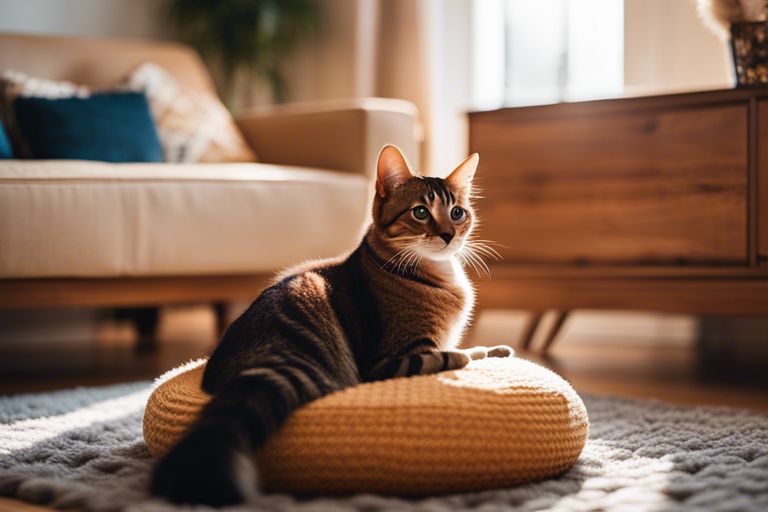
Maintaining Harmony: Multi-Cat Households
For cat lovers, having multiple feline companions can be a source of joy and fulfillment. However, managing a multi-cat household requires careful attention to maintain harmony among the resident cats. By understanding the dynamics of living with multiple cats and implementing effective strategies, you can create a peaceful and contented environment for all your furry friends.
Balancing Territory and Resources
An essential consideration in a multi-cat household is the availability of territory and resources. Cats are territorial animals, and they seek to establish their own space within the home. To prevent conflicts over territory, it’s crucial to provide ample resources such as litter boxes, food and water dishes, scratching posts, and cozy resting spots. Additionally, individuals who manage a multi-cat household should ensure that there are multiple areas for hiding, perching, and playing, allowing each cat to have their own personal space and minimizing competition for resources.
Introducing New Cats Properly
One of the most challenging aspects of managing a multi-cat household is introducing new cats to the existing residents. Cats are creatures of habit, and they may perceive a new addition as a threat to their established territory and resources. Proper introduction involves gradual acclimation, scent exchange, and supervised interactions to help the cats become familiar with each other. By following a structured and patient introduction process, individuals can help to reduce tension and promote positive relationships among their feline companions.
For instance, introducing new cats properly may involve initially keeping the new cat in a separate room to allow them to become accustomed to the new environment and scent of the other cats. This can help to minimize stress and prevent potential conflicts during the introduction process. Gradually allowing supervised interactions and positive experiences can help to facilitate a smooth transition and promote harmonious relationships among all the cats in the household.
Routine Health Care in a Cozy Home
Now that you have created a cozy haven for your feline friend, it’s important to ensure that they receive the proper routine health care to keep them happy and healthy. This includes grooming and nail care as well as regular veterinary visits and vaccinations.
Grooming and Nail Care
Health grooming and nail care are essential for maintaining your cat’s well-being. Regular brushing helps to remove loose fur and prevent hairballs, while also promoting circulation and healthy skin. Additionally, keeping your cat’s nails trimmed is important to prevent them from becoming overgrown or causing discomfort. Introducing a grooming routine early on can help your cat become more accustomed to the process, making it a positive experience for both of you.
Regular Veterinary Visits and Vaccinations
Care for your cat also involves regular veterinary visits and vaccinations to ensure they are protected against common diseases and parasites. Your veterinarian can provide important preventive care, such as flea and tick prevention, as well as keeping up-to-date on vaccinations to prevent diseases such as feline leukemia and rabies. By staying on top of these routine visits, you can catch any potential health issues early and provide the best care for your cat.
Plus, keeping your cat up-to-date on their vaccinations can help provide peace of mind knowing that they are protected against potential health threats, allowing them to enjoy their cozy home environment to the fullest.
DIY Projects for Cat Enrichment
Despite the wide array of cat toys and accessories available in the market, there’s something special about creating handmade items for your feline friend. Not only do DIY projects allow you to personalize the enrichment activities for your cat, but they also provide an opportunity for bonding and creative expression.
Homemade Toys and Puzzle Feeders
Projects like creating homemade toys and puzzle feeders can be both fun and rewarding for you and your cat. Simple items like cardboard boxes, toilet paper rolls, and fabric scraps can be repurposed into interactive toys that stimulate your cat’s senses and encourage play. Additionally, puzzle feeders can be crafted using materials like PVC pipes or plastic bottles, providing mental and physical stimulation during meal times.
Building a DIY Catio or Cat Furniture
One of the ultimate DIY projects for cat enrichment is building a catio or cat furniture. A catio is an enclosed outdoor space that allows your cat to safely experience the outdoors while being protected from potential dangers. Building cat furniture, such as climbing structures, scratching posts, and cozy resting areas, not only enhances your cat’s environment but also promotes healthy behaviors and reduces stress.
Feeders, DIY projects, enrichment, cat-friendly, homemade toys, puzzle feeders, catio, cat furniture, bonding, creative expression
Troubleshooting Common Issues
To ensure a harmonious environment for both you and your feline friend, it’s important to address any common issues that may arise in a cat-friendly home. From inappropriate elimination to destructive scratching, there are effective strategies to troubleshoot these behaviors and create a happy, cozy haven for your cat.
Dealing with Use of Inappropriate Areas as a Litter Box
With cats, it’s not uncommon for them to use inappropriate areas as a litter box, such as rugs or carpets. This behavior can be caused by several factors, including stress, territorial marking, or dissatisfaction with the litter box itself. To address this issue, it’s essential to first rule out any medical problems by consulting with a veterinarian. Once medical issues are ruled out, consider providing multiple litter boxes placed in different areas of the home, using unscented litter, and keeping the boxes clean. Additionally, providing a secure, peaceful environment and addressing any sources of stress can also help deter this behavior.
Addressing Destructive Scratching
Common among cats, destructive scratching can be a source of frustration for pet owners. This behavior is a natural instinct for cats, serving as a way to mark territory, maintain nail health, and stretch their muscles. To address destructive scratching, providing appropriate scratching posts and pads in various locations throughout the home can help fulfill their natural instinct without damaging furniture. Regular nail trimming, offering interactive play sessions, and using deterrents such as double-sided tape or citrus scents on furniture can also help discourage destructive scratching.
For instance, incorporating vertical and horizontal scratching options can cater to different preferences and provide an outlet for natural behaviors. Consistent training and positive reinforcement can help redirect destructive scratching to appropriate surfaces, ultimately creating a cat-friendly home environment.
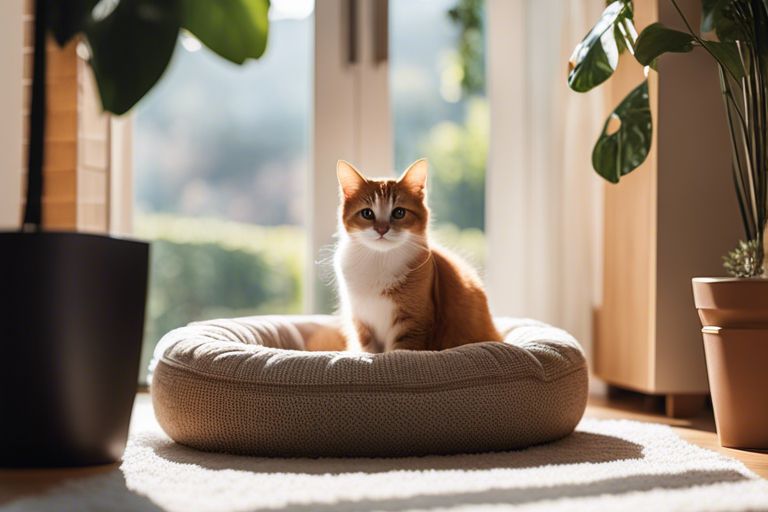
Conclusion
Drawing together a diverse range of strategies and ideas, it’s clear that creating a cat-friendly home environment can be a rewarding and enjoyable process for both feline companions and their owners. By considering the physical layout and design of the home, as well as the incorporation of cat-friendly furniture and accessories, a cozy haven can be established that fosters a sense of comfort and security for our furry friends. Furthermore, by understanding and prioritizing the unique needs and behaviors of cats, we can better cater to their physical and mental well-being, ultimately strengthening the bond between humans and their beloved pets.
FAQ – A Cozy Haven – Creating A Cat-Friendly Home Environment
Q: Why is it important to create a cat-friendly home environment?
A: It is important to create a cat-friendly home environment to ensure that your feline friend feels comfortable, safe, and happy in your household. Cats have unique needs and creating a cat-friendly home environment will help reduce their stress and provide them with a space where they can thrive.
Q: How can I make my home more cat-friendly?
A: You can make your home more cat-friendly by providing plenty of vertical space for them to climb, using cat-friendly furniture, creating cozy hiding spots, and providing scratching posts and toys for them to play with. Additionally, ensuring that your home is safe and free from hazards is essential in creating a cat-friendly environment.
Q: What are some tips for introducing a new cat to my home environment?
A: When introducing a new cat to your home environment, it’s important to do so gradually. Provide a separate space for the new cat initially, allowing them to get comfortable with their surroundings before slowly introducing them to the rest of the house and any other pets. Additionally, make sure to provide plenty of hiding spots and vertical space for them to explore.
Q: How can I reduce stress in a multi-cat household?
A: To reduce stress in a multi-cat household, make sure to provide plenty of resources such as litter boxes, food and water bowls, and hiding spots. Additionally, create separate resting areas and provide opportunities for individual play and interaction with each cat. It’s also important to address any conflicts between cats promptly and seek advice from a veterinarian or animal behaviorist if necessary.
Q: Are there any household items that are toxic to cats and should be avoided?
A: Yes, there are several household items that are toxic to cats and should be avoided. Some common ones include certain plants (such as lilies and philodendron), human medications, certain foods (such as onions, garlic, and grapes), as well as chemicals such as antifreeze and certain essential oils. It’s important to research and be aware of potential hazards in your home to keep your cat safe.
